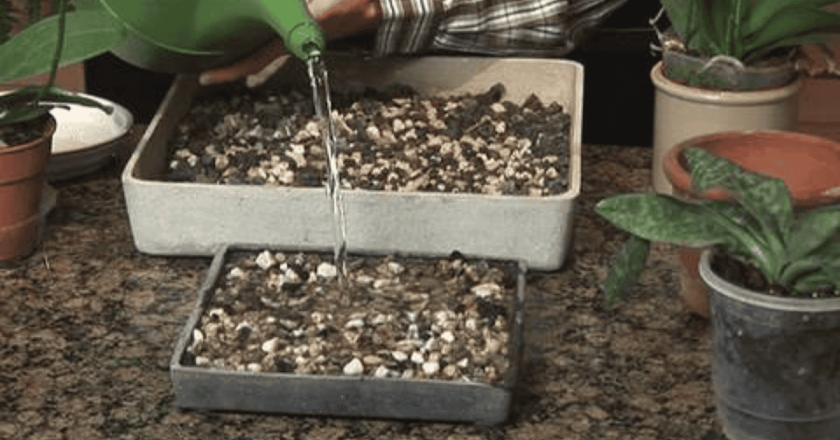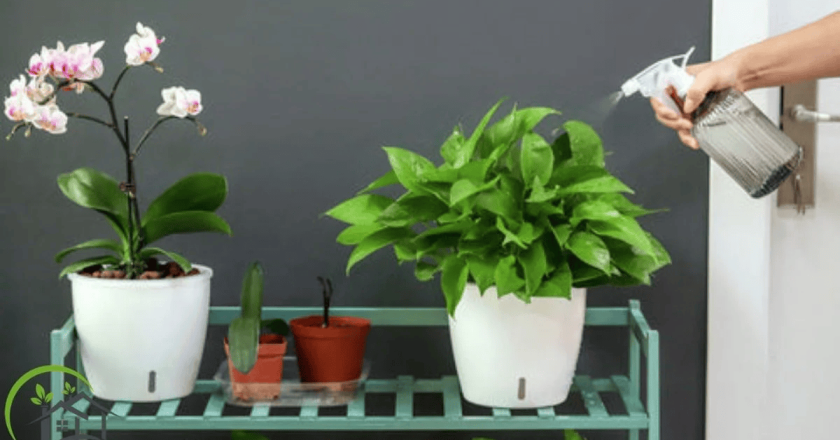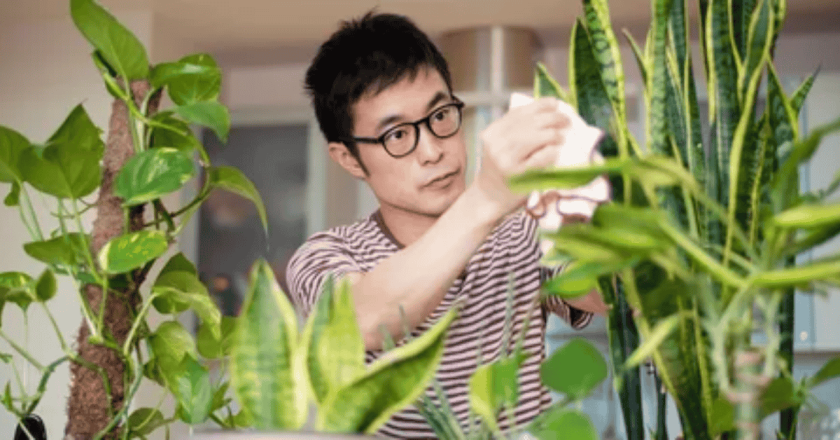There’s something oddly comforting about a money tree. Maybe it’s the bright green leaves stretching out like little hands, or perhaps it’s the quiet, persistent belief that this plant could invite a little more prosperity into your life. Either way, whether you’re a seasoned plant parent or you’ve just Googled “money tree near me” for the first time today, you’re in good company.
The money tree — officially called Pachira aquatica — has found its way into homes, offices, and coffee shops around the world. Some call it a money plant, others the Guiana chestnut, or even the Chinese money tree. Whatever the name, the feeling is the same: hope, luck, and abundance. 🍀
But if you don’t know how to care for a money tree correctly, it might not stick around long enough to bring you that good fortune.
Don’t worry — money tree plant care is easier than you might think.
Let’s dig in (pun intended!). 🌿
📚 What Is a Money Tree?
Before setting up watering schedules and shopping for money tree soil, let’s start with the basics.
The money tree plant (Pachira aquatica) is a tropical wetland tree native to Central and South America. Outdoors, it can grow up to 60 feet tall! Indoors? Expect your large money tree to remain within a manageable height of 6–8 feet, depending on the care it receives.
Fun fact: the famous braided money tree trunks you see? Human-made! In nature, these trees grow straight and free.
There are even variegated money trees, with creamy-white splashes across their leaves — a real showstopper if you can find one. 🌟
🌿 Money Tree Basics
Recognisable by its intricately braided trunk and shiny green leaves, the money tree plant (Pachira aquatica) is surprisingly easy to care for. 🌱
Perfect for new plant parents or busy gardeners juggling more demanding species, it’s forgiving if you skip a watering here and there.
Even indoors, a healthy money tree can grow into an elegant, towering centrepiece. Outdoors, in its native tropical environment, it soars even higher!
Known as the Guiana chestnut, this beautiful plant is strongly tied to wealth and positive energy in feng shui traditions. Additionally, it’s very forgiving if you miss a watering or two, making it an ideal choice for beginners.
🌟 Just one caution: it’s not ideal for very low-light conditions (think: dark basements are a no-go).
📋 Money Tree Profile
| Attribute | Details |
|---|---|
| Common Names | Money Tree, Guiana Chestnut, Chinese Money Tree |
| Botanical Name | Pachira aquatica |
| Family | Malvaceae |
| Sun Exposure | Bright, indirect light |
| Soil Type | Well-draining |
| Bloom Time | Spring |
| Mature Size (Indoors) | 3 to 8 feet |
| Flower Color | Yellow-white |
| USDA Hardiness Zones | 10 to 12 |
| Native Area | Central and South America |
| Pet Toxicity | Non-toxic to cats and dogs 🐾 |
| Symbolism | Luck, prosperity, abundance 🍀 |
🍀 Why Are Money Trees Considered Lucky?

You’ve probably heard it: the money plant indoors is a magnet for good fortune.
According to Feng Shui, the five leaves on each branch of a money tree represent the five elements — earth, water, fire, wood, and metal — bringing balance and prosperity. 🌈
No wonder people love gifting a money tree plant for weddings, housewarmings, or New Year celebrations. Even if you’re sceptical, it’s hard not to smile when you pass one every morning.
🪴 Quick Reference: Money Tree Care Guide
| Aspect | Best Practice |
|---|---|
| 🌞 Light | Bright, indirect sunlight; east or south window best |
| 💧 Watering | Every 1–2 weeks, allow the soil to dry slightly in between |
| 🌡️ Temperature | 65–80°F; avoid cold drafts or sudden changes |
| 🌫️ Humidity | Moderate to high; use a humidifier or pebble trays |
| 🪴 Soil | Well-draining potting mix with sand or perlite |
| 🧪 Fertilizer | Balanced, water-soluble, once a month in spring/summer |
| ✂️ Pruning | Light pruning in spring to shape and promote growth |
| 🔄 Repotting | Every 2–3 years or when rootbound |
| 🦠 Common Problems | Overwatering (root rot), low humidity (brown tips) |
| 🛒 Buying Tips | Look for healthy green leaves, no yellowing or pests |
☀️ Light Requirements: Find the Sweet Spot
Think: bright, indirect light.
If you place your money tree plant directly under harsh sun, it might burn its delicate leaves.
But if you tuck it away in a dark corner, it could become leggy and weak.
Best practice: near an east- or south-facing window with sheer curtains. 🌞
If you’re still wondering about money tree light requirements, remember — if you wouldn’t comfortably read a book in that spot without a lamp, it’s probably too dark for your pachira plant.
💧 Watering Wisdom: Less Is More
Overwatering is the #1 cause of money plant heartbreak.
Here’s the easy method:
-
Stick your finger into the soil about two inches deep.
-
If it’s dry? Water thoroughly until it drains.
-
If it’s still damp? Wait a few more days.
Typically, you’ll water every 1–2 weeks, but seasonal changes can alter this schedule. ☀️❄️
In summer, it’ll need more; in winter, much less.
If you’re asking how often to water a money tree? The soil tells you. Always.
👉 Bonus tip: Make sure the pot has drainage holes. Standing water is a big no-no.
🌡️ Temperature and Humidity: Keep It Cozy
-
Ideal temperature: 65–80°F.
-
Hates: Drafts, air vents, sudden chills.
-
Loves: Humidifiers, pebble trays, shower rooms!
Humidity matters — especially if you want lush, shiny leaves on your money tree pachira aquatica. Group your money plants together if you need to naturally boost humidity. 🌫️
🪴 Soil and Fertilizer: Feed That Fortune
Choose loose, well-draining soil — like a basic houseplant mix with a sprinkle of sand or perlite added.
(Think: tropical riverbanks, not swampy puddles.)
During spring and summer:
-
Fertilize once a month with balanced liquid fertilizer.
-
Slow down or stop during fall and winter.
If you’re wondering about money tree food, don’t overcomplicate it — a simple houseplant fertilizer does wonders.
✂️ Pruning and Shaping: Keep It Tidy
Knowing how to prune a money tree is essential for maintaining its beauty indoors.
In spring:
-
Snip off any leggy or scraggly stems.
-
Prune just above a leaf node.
-
Shape it loosely, but don’t go crazy—money trees like a little structure.
If you accidentally cut too much? No worries — they’re tough and usually bounce back. ✂️
🔄 Repotting: Give It Room to Grow
Money tree maintenance includes a little repotting every 2–3 years.
When you notice roots poking out the bottom or water rushing straight through the pot, it’s time.
Choose a pot just slightly larger — don’t overdo it. Best soil for money tree is still lightweight, airy, and draining fast.
Wondering how big do money trees get indoors? With proper care, up to 8 feet isn’t unusual!
🐛 Common Problems (And Real-Life Fixes)
-
Yellow Leaves: Probably overwatering. Let it dry.
-
Brown Tips: Dry air. Increase humidity.
-
Soft Trunk: Root rot. Repot immediately.
-
Leggy Growth: Not enough light.
-
Pests (Spider Mites, Scale): Neem oil treatment monthly.
Taking care of money tree plants isn’t about perfection — it’s about consistency. 🌿
🌱 Propagation: Growing Even More Fortune
Want another pachira macrocarpa for free? Here’s how:
-
Cut a healthy stem with a node.
-
Place in water.
-
Wait for roots to grow (patience!).
-
Transfer to a pot and watch the magic happen.
Propagation is one of those small miracles that make plant care endlessly rewarding. ✨
🌟 Key Takeaways
✅ Money trees (Pachira aquatica) are low-maintenance but need attention to watering and lighting.
✅ Keep your plant in bright, indirect sunlight and let the soil dry between waterings.
✅ Humidity boosts and occasional pruning will keep your money tree thriving.
✅ Repot every few years to support healthy root systems and continued growth.
✅ Believed to attract luck and abundance, a well-tended money plant is a joy to live with!
🌿 Final Thoughts: Your Money Tree Journey Starts Now
Caring for a money tree isn’t just about keeping a plant alive. It’s about cultivating patience, daily attention, and maybe a little hope.
Whether you call it a money tree, a money plant, a Guiana chestnut, or simply “that lucky thing in the corner,” it’s a powerful symbol that good things — like lush green leaves and prosperity — grow over time. 🌱
And honestly? Even if all it ever brings you is a little more life and colour in your home… isn’t that a pretty great deal?




